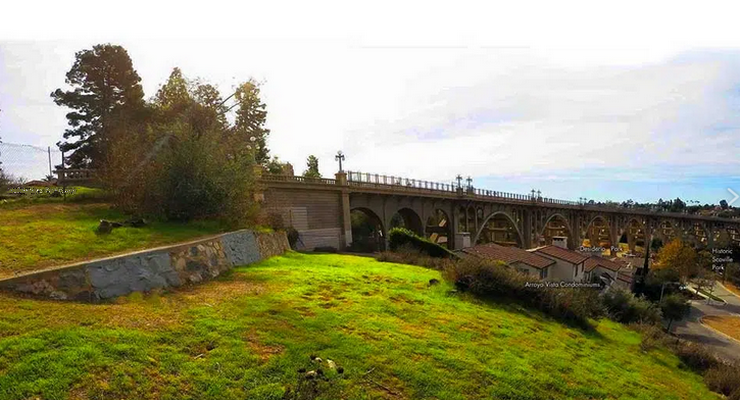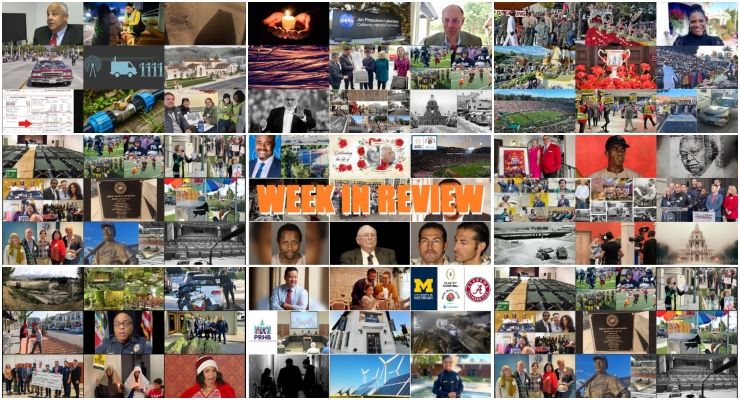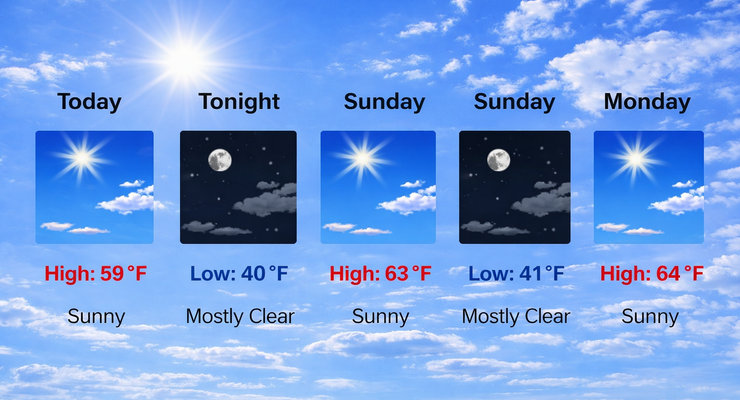
The Arroyo Link, a historical path that Pasadenans once traversed to get to the Arroyo Seco, is being re-envisioned as a multi-use path for walking, biking, and jogging from Old Pasadena to the Arroyo Seco.
Although the project has a way to go until Pasadenans see an actual path, the Pasadena City Council unanimously voted to include the Arroyo Link in the City’s submittal to the Los Angeles County Metropolitan Transportation Authority (Metro) of its top 12 projects for funding.
The Arroyo Link project will next be considered by the Los Angeles County Metropolitan Transportation Authority (Metro), in lieu of the Metro L (Gold) Line Grade Separation, after that project was deemed impractical and nixed.
Canceling the Metro L Line Grade Separation, funded by Metro’s Measure R Mobility Improvement Project, freed up millions of dollars Pasadena can use for other projects.
Advocates are hoping that the millions of dollars will be put to use on other proposed transportation projects, among them the Arroyo Link.
According to the proposal submitted by Pasadena resident David Wolf to the City Council in 2019, the Arroyo Link would revive an old pathway that connected Old Pasadena to the Arroyo Seco, utilizing existing parks and fragments of lost parks where the end of Colorado Blvd., Pasadena’s main thoroughfare, meets the Arroyo Seco as a set of scenic, linked landscapes.
Wolf prepared extensive historical and planning documents in support of the project and obtained the City Council’s support. When he passed away in November 2019, the Friends of David Wolf and the Arroyo Link took over stewardship of the project and is now requesting funding for the design and build of the Link from the City of Pasadena.
With the cost of the design and construction to be approximately $9.5 million, the City initiated a funding search by requesting $2 million in its Measure R Round 1 Mobility Improvement Projects Project Sponsor Submittal in November of 2018. The list of projects included the Gold Line Grade Separation, which was ultimately canceled, leaving over $230 million in funds that can be re-committed to other projects.
In September, the City Council Monday unanimously approved a wishlist of 19 projects to replace the canceled Gold Line Grade Separation project. Of the 19, 11 were first identified as priority projects. The Arroyo Link was initially listed as one of the eight non-priority projects, but before the session on Sept. 19 ended, the project was added as the 12th priority project.
“Our intent in prioritizing the projects is really to underscore to them (Metro) the projects we think most closely align with both their funding criteria as well as our local city goals,” Transportation Director Laura Cornejo told members of the City Council that day.
To illustrate how they plan to revitalize existing parks and revive fragments of lost parks and eventually build the Arroyo Link, the Friends of David Wolf and the Arroyo Link have published an e-book on their website, https://www.arroyolink.com, which describes Pasadena in the 1890s, when walking and bicycling were vital modes of transportation.
The e-book details how Scoville Park was developed in the basin of the Arroyo Seco below where the Colorado Street Bridge now exists. The park, named after its founder James Scoville, had a zig-zag path from the Valley Hunt Club, which then was near the corner of Grand Ave. and Colorado Street, where members could ride down the hill on horseback to hunt in the Arroyo.
It also tells about how John Muir visited Pasadena and was amazed after hiking from the Arroyo Seco to the San Gabriel Mountains of the beauty that surrounded the area. After contributing to the parks and open space movement of early Pasadena, Muir invite Jeanne Carr from Northern California to visit Pasadena. Carr subsequently bought land there and built Carmelita Gardens, which for decades was a favorite meeting place for artists, writers, and nature lovers.
Carmelita Gardens, Scoville Park, the zig-zag path, and other former parks such as Defenders Parkway and Pioneer Monument were all impacted during freeway construction in Pasadena. What the Friends of David Wolf and the Arroyo Link plans to do, with the City’s support, is link these memorable places and make them accessible again to Pasadenans as they walk or bike their way to the Arroyo Seco.
“We are urbanists, architects, active transportation advocates, and civic supporters; we are all working together with the City and the community toward David’s vision of a safe, beautiful link to the Arroyo and to our city’s rich history,” a statement on the group’s website says.
In the end, it will be Metro that will have the final determination as to which projects of the submitted projects get funded, but the City of Pasadena could always go back to them and convince the Metro board that there is sufficient community support to get the Arroyo Link project done.


















